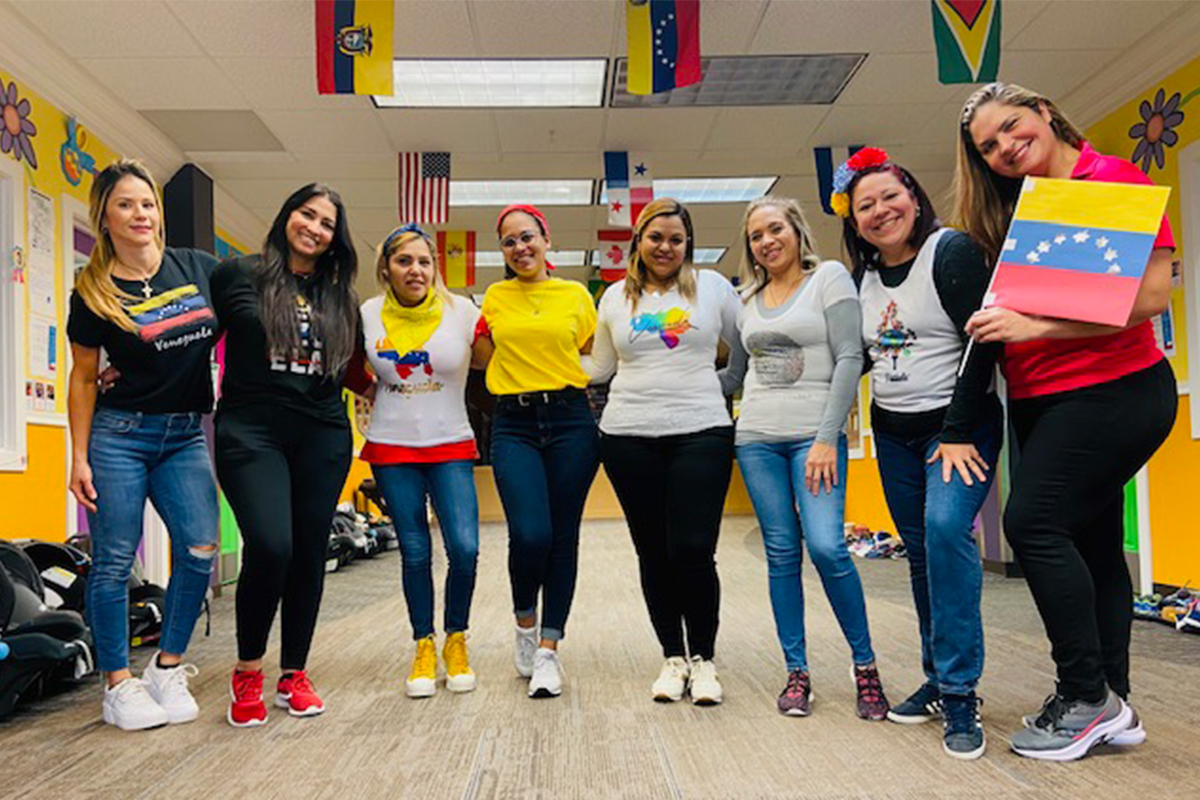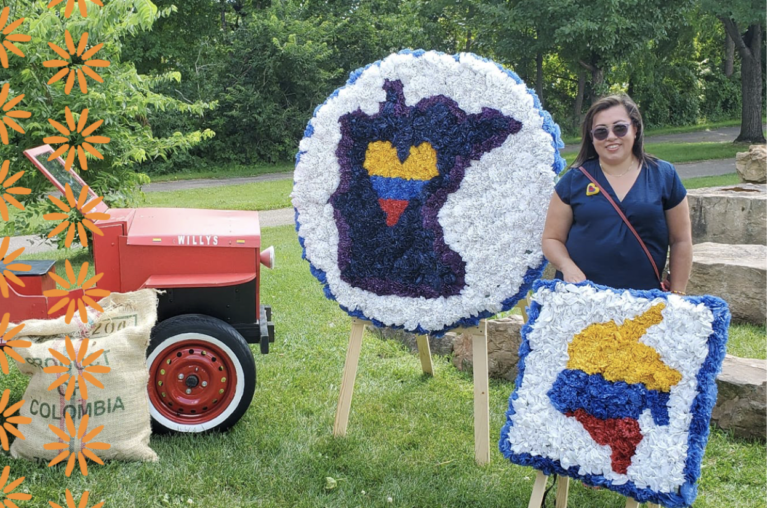Country of the Month: Venezuela

This month at Casa we are looking forward to sharing the wonderful traditions from Venezuela with our children at our childcare centers! They will have an authentic experience as our teachers from Venezuela proudly share their culture through stories, lessons, and regional dances. Since we as parents would most likely love to be in these classes, we are sharing a small portion of the experience through this post!
Venezuela is one of the 17 megadiverse countries of the world. They have incredibly diverse landscapes that range from mountainous regions and plains to lakes and jungles. This country not only boasts a beautiful landscape but its food, dance, and music are very unique. African, European, and Native traditions merged and evolved over the years and have inspired Venezuelans to be joyful, enjoy music, and focus on positivity. Didn’t know this about Venezuela? Learn more below along side our childcare centers!
Table of Contents:
- History
- Food
- Common Phrases
- Music & Dance
- Staff
History
Venezuela, like many other Latin-American countries, was home to indigenous groups before the arrival of European settlers. The Arawak and Carib people lived in this region and clashed with Columbus when he arrived in 1498. The name Venezuela, meaning Little Venice, was given to this region after explorers saw houses on stilts. The Spanish desire for gold and to find the lost city of El Dorado brought them to the region. Throughout its history, Venezuela experienced much turmoil, power taken by force, and invasions. Today, there is still much turmoil as political leaders attempt to impose power during food and resource shortages, and increasing poverty rates have forced the population to migrate elsewhere.
Food
Venezuelan cuisine is vibrant, diverse, and comforting. Meals usually are very colorful and mix many components together. Influences from West Africa, Europe, Native groups, and their diverse resources have brought forth delicious meals. We recommend watching this video to bring these dishes to life and maybe inspire your next food adventure!
Arepa
This is probably the most iconic and well known dish from Venezuela. It is a corn flour patty cut in half to make a sandwich and stuffed with various fillings such as meat, cheese, and beans. Arepas are very easy and fun to make! Each region has a traditional stuffing they use, thus making this dish incredibly versatile. We also offer Arepas through our Casa to Go program and sometimes for our little ones to try in our childcare centers.
Hallaca
These are meat tamales cooked in a plantain leaf typically around Christmas time. Hallacas are oftentimes filled with meat, olives, and capers but each family recipe is different. They require lots of patience and time to make so families will usually join forces. Hallacas are gifted to friends during the holidays! Watch this video from a Venezuelan chef and try to make them this weekend!
Pabellon Criollo
Pabellon best represents the fusion of all the different influences in Venezuela. It is a dish with white rice, fried plantain, shredded seasoned beef, and a side of beans. If you travel to Venezuela it is a must-try as this is the national dish!
Chicha
Chicha is sold everywhere. It is a very refreshing and sweet drink made from milk, white rice, and cinnamon similar to horchata served in Mexico. There are chains in Venezuela that serve this drink and top it with different ingredients such as chocolate syrup.
Common Phrases
Each country in Latin America has distinctive phrases only locals would understand. These are the most common phrases you might hear when talking to someone from Venezuela.
Chevere is by far the most common term you will hear. You might hear “Que chevere” or “Eso esta bien chevere” meaning “How cool” or “That is very good”. The second most common word you might hear is Chamo/a used to refer to someone casually as “dude” but can also be used towards women.
Other phrases you might hear include Al llorar pal valle which is typically used when someone gave you advice and you did not follow, leaving you with hearing the phrase cry in the valley! Esta peludo means it’s hairy, referring to something very difficult such as the term a big hairy goal.
Music and Dance
Venezuelans listen to lots of music and love to dance. They love salsa and merengue but are most known for their national dance or the Joropo. This dance follows a 3 beat rhythm and the music features the llanera harp and the cuatro, a Venezuelan guitar with four strings. Watch this video to learn the dance and try it with your child our encourage your childcare center to try this new activity!
And as you get in the dancing mood try listening to songs from these famous Venezuelan Musicians: Ricardo Montaner and Nacho.
We are very thankful for our staff from Venezuela! They have contributed so much to our community/childcare centers and they have taught us so many things. Their enthusiasm is contagious and we love being around them! We would love to recognize our staff from Venezuela who always put a smile on everyone’s face.
- Veronica (Center Director)
- Cira (Substitute Teacher)
- Marian (Lead Teacher)
- Veronica (Teacher Aide)
- Elba (Lead Teacher)
- Annie Perez (Lead Teacher)
- Gericel (Teacher Aide)
- Anais (Lead Teacher)
- Cristina (Teacher Aide)
- Adriana (Teacher Aide)
- Jesus (Facilities)
- Heriana (Cook)
- Wilmar (Lead Teacher)
- Adriana (Lead Teacher)
- Daniella (Lead Teacher)
- Mari Carmen (Lead Teacher)
- Martha (Teacher Aide)
- Luz (Lead Teacher)
- Alecia (Teacher Aide)
- Monica (Lead Teacher)
- Ludmila (Cook)
- Adriana (Teacher Aide)



